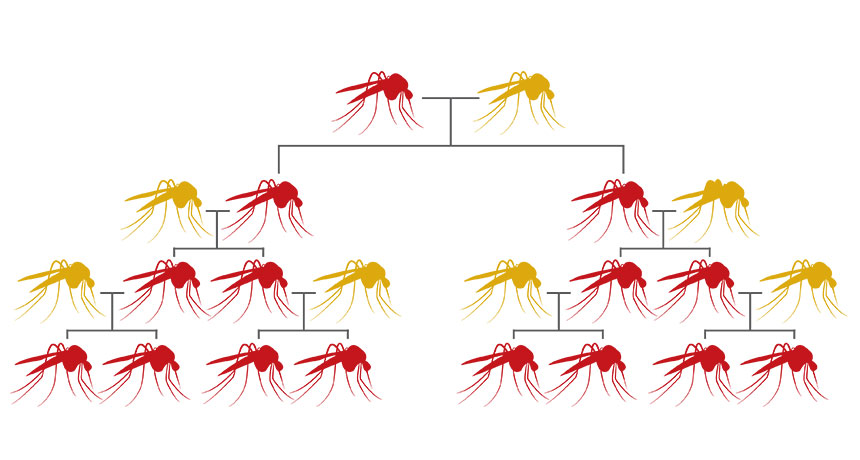Seeing the upside in gene drives’ fatal flaw

ORLANDO, FLA. — What some people view as a flaw in a new genetic-engineering tool might actually be a safety feature, a study suggests.
CRISPR/Cas9 gene drives, as the new tools are called, are molecular cut-and-paste machines that can break regular rules of inheritance and get passed to more than 50 percent of offspring (SN: 12/12/15, p. 16). The rapid spread of engineered genes through a population may allow researchers to make mosquitoes unable to spread malaria or other diseases, to sterilize the insects, or to clear pests or invasive species out of places where they are not wanted (SN: 12/26/15, p. 6; SN Online: 12/7/15).
Gene drives have worked in the lab, but have many ethical, technical and other hurdles to overcome before they could be released in the wild. For instance, many scientists, environmentalists and policy makers are concerned that gene drives could wipe out entire species or have unintended consequences for ecosystems.
Among the technical hurdles is that gene drives may stop working because mutations destroy their ability to home in on a target genes or to cut DNA. In fact, such “resistance” to gene drives will arise “almost inevitably,” Philipp Messer, an evolutionary geneticist at Cornell University said July 14 at the Allied Genetics Conference.
Researchers are working on ways to keep gene drives functional, but Messer thinks letting them break could prevent runaway spread and unintended harm. “Why not embrace the resistance?” he said.
Even if gene drive‒killing mutations arise, they typically would only propagate at the normal rate — a 50 percent chance of being inherited in the next generation. The slow spread means it will take many generations before resistance mutations become frequent enough in the population to stop a gene drive’s roll, Messer and colleagues calculated. In one scenario, they found that a gene drive could power its way into more than 99 percent of individuals in a population in about 30 generations. But a resistance mutation would take about 100 generations to become present in 50 percent of the population. Those calculations were reported last month on biorxiv.org.
Messer said that he and his colleagues are conducting experiments with fruit flies carrying a gene drive to test whether their calculations are correct.
Researchers may be able to devise strategies to orchestrate spread of a gene drive while keeping it in check by manipulating conditions that favor resistance mutations, Messer said. With such a system, disease-carrying mosquitoes or other pests could be reduced to safe levels in a local area without destroying the species entirely.
“I found that talk reassuring,” said evolutionary biologist Michael Gilchrist of the University of Tennessee, Knoxville. Introducing new biological organisms — engineered or not — may have secondary effects that people can’t predict “and they can be devastating,” he said. Researchers may be able to head off any such negative effects by introducing individuals carrying resistance mutations after seeing what a gene drive could do, Gilchrist said. Researchers could control how hard to apply the brakes on a gene drive by varying the number of individuals harboring resistance mutations they introduce into a gene-drive carrying population. Knowing that resistance is not necessarily futile may make some people more comfortable with allowing gene drives to be released into the wild.